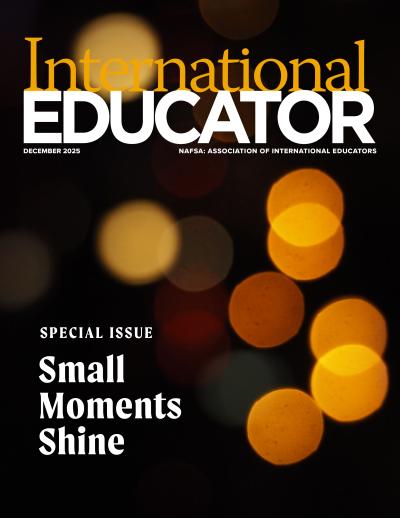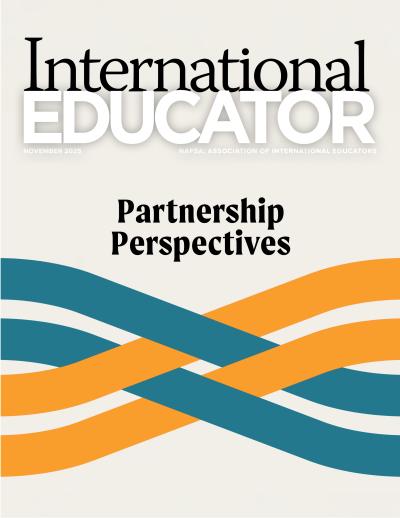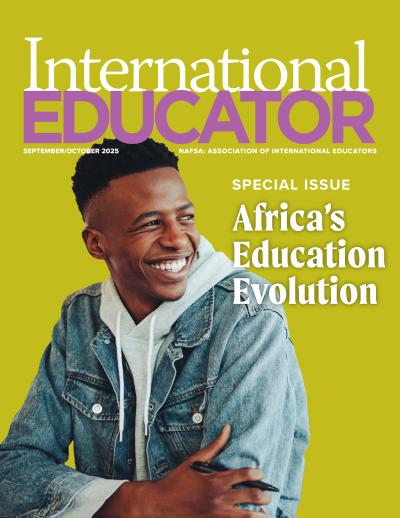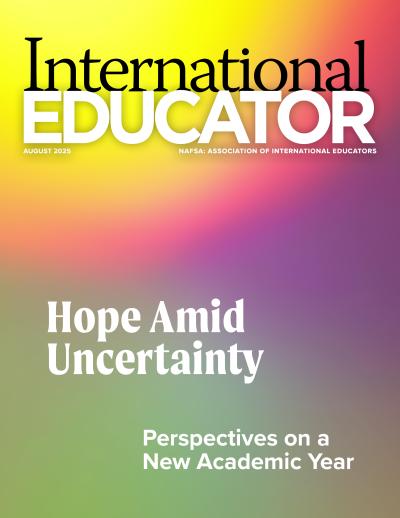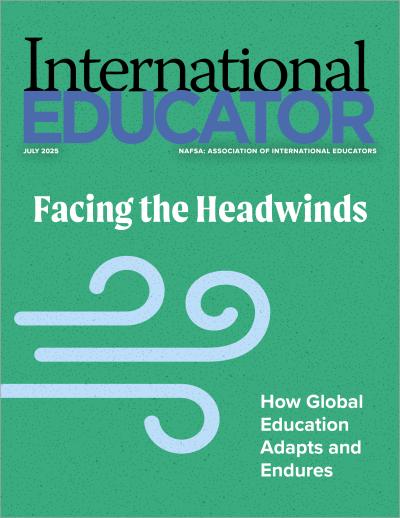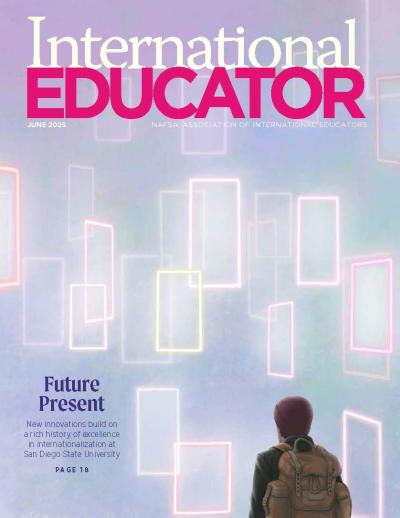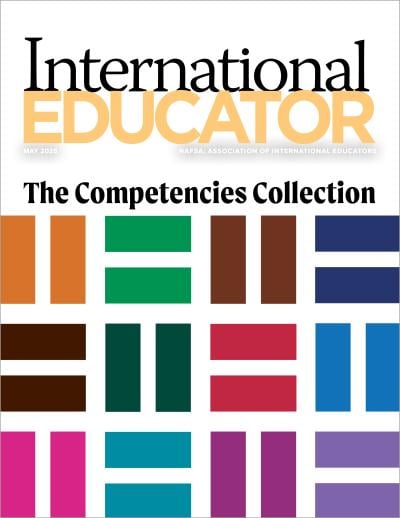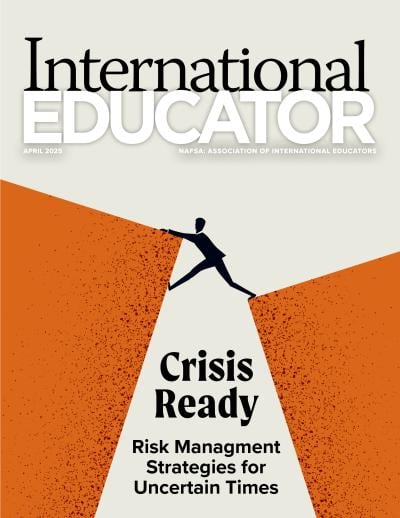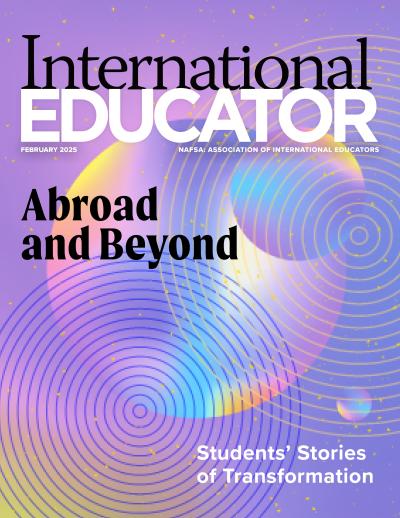Building Intentional and Mutually Beneficial Strategic Partnerships in Africa
International partnerships with African institutions have historically followed a familiar pattern: Funding sources determine research agendas, external partners arrive with predetermined solutions, and African institutions are expected to adapt to models designed elsewhere.
That approach is an "irresponsible" one, says Damilola Akinyele Wolfgarten, executive director of the nonprofit Princeton in Africa, which places recent graduates from U.S. universities with organizations across Africa for yearlong fellowships. Akinyele Wolfgarten, who is Nigerian, was educated in the United States and became the first African executive director in the organization's 26-year-long history.
As Africa's population grows—with projections showing one in four people globally will be African by 2050, according to the United Nations Economic Commission for Africa—the continent's educators and leaders are advocating for partnerships built on different principles: cocreation rather than imposition, mutual benefit rather than one-way capacity building, and recognition of existing expertise rather than assumptions of need.
This shift is reshaping how international education partnerships are conceived and implemented across sub-Saharan Africa. From Kenya to Senegal to South Africa, African institutions are articulating new models for collaboration that move beyond traditional student exchanges to encompass joint research initiatives, regional networks, and capacity-building programs designed on African terms. Ultimately, successful partnerships recognize African institutions as equal partners with valuable expertise to contribute—not just recipients of external support.
Defining Terms and Challenging Assumptions
The language around international partnerships can be difficult to parse, experts say. Words that seem straightforward, like "partnership" and "capacity building," often mean different things to different people.
Hilary Kahn discovered this during a U.S. State Department meeting about partnerships in Africa. "There were conversations like: 'That's not a partnership. That's capacity building,'" recalls Kahn, vice provost for international affairs at Indiana University-Indianapolis, which has a long history of engagement in Africa. Representatives of African institutions disagreed, viewing these same collaborations as partnerships. The exchange revealed a disconnect: What U.S. institutions categorized as aid, African institutions viewed as collaboration.
"It's all about recreating this lexicon and redefining what a partnership means in a very collective way, and not going in with any preconceived ideas," Kahn says.
For Korka Sall, a Senegalese scholar who completed her PhD at the University of Massachusetts-Amherst and has worked extensively with U.S. study abroad programs in Senegal, a common understanding of these terms is critical for partnerships to be mutually beneficial. When one institution dictates the terms and goals without meaningful input from the other, that is not partnership, says Sall, who is the current director of the Yenne Kids' Academy in Senegal.
It's all about recreating this lexicon and redefining what a partnership means in a very collective way, and not going in with any preconceived ideas. —Hilary Kahn
Beyond definitional work, this mindset shift challenges fundamental assumptions about what African institutions bring to collaborations. For many international educators outside of Africa, the default thinking has been that African universities need resources, training, or expertise from abroad. African educators are pushing back on those assumptions.
In response to the expectation that African institutions lack resources, ideas, and expertise of their own, Sall counters, "That's not always true. Sometimes we have institutions that are way ahead of [those in] the United States."
She's seen this pattern play out repeatedly. U.S. institutions approach potential partners with predetermined ideas about what training or capacity building African institutions need. "Instead of saying we are here looking for a partnership, [they say] you need training on X, Y and Z," she says.
An intentional approach requires a different starting point: curiosity rather than assumption. This mindset recognizes that African institutions have been using local resources and developing solutions to address local challenges for decades. Many have trained national leaders, developed innovative approaches to community engagement, and created programs that work within their specific contexts.
"International educators really need to know more about Africa," Sall asserts. "Get out of the bubble of thinking that the United States is the provider and [that] the African institution is just [a] place that needs the U.S. institution."
An Intentional Approach
This new approach to partnerships transforms how educators can think about capacity building. The assumption that African institutions need specific skills or knowledge from their international partners is giving way to more nuanced conversations about what different institutions can offer each other.
"Capacity building is not just for the African institutions, because sometimes we may not even need that," Sall explains. Instead, staff might need opportunities to build new skills or improve processes. This perspective challenges partners to move beyond a deficit mindset. But it also requires honest conversations about real disparities in resources and power.
Kahn advocates for acknowledging those differences from day one. "The resources are not equal," she says. "The recognition of some of the inequities and the inequalities and the power differences and resource differences just have to go out on the table immediately."
Rather than pretending equality of resources exists where it doesn't, this approach acknowledges structural inequities while still building collaborative relationships. African institutions define their priorities, and international partners figure out how to support those goals.
Grounding discussions in local priorities is essential [since] effective partnerships respond to the realities of regional contexts rather than relying on one-size-fits-all models. —Jenny Lee
"I think we just need to sit down right away and [say], 'this is what we can offer, and this is what you can offer,' and then talk about how we can come together," Khan says.
The University of Arizona, which has developed partnerships across Southern and Eastern Africa, has built this inclusive approach into its partnership development process. Jenny Lee, vice president of Arizona International at the University of Arizona, emphasizes the importance of bringing in diverse stakeholders early on in the process.
"Faculty, students, administrators, and, where applicable, local governments and industries should all be engaged in shaping shared goals and meeting expectations," she says. "Grounding discussions in local priorities is essential [since] effective partnerships respond to the realities of regional contexts rather than relying on one-size-fits-all models."
When partnerships incorporate existing expertise, they can build genuinely collaborative processes for decision-making and agenda-setting. The most sustainable partnerships are those where both sides have meaningful input from the beginning.
"It starts with cocreation, and that cocreation starts with [an] agenda, whether it's a research agenda, whether it's community engagement, it's about setting the agenda together," says Lavern Samuels, chair of the Southern African-Nordic Centre (SANORD), a consortium of universities across Southern Africa and the Nordic region, and director of international education and partnerships at Durban University of Technology in Durban, South Africa.
The network facilitates joint doctoral programs in which students spend portions of their degree at partner universities, where they work on collaborative research projects on climate change and public health where researchers from both regions identify shared challenges.
Princeton in Africa demonstrates another collaborative approach. Rather than the U.S.-based nonprofit making all placement decisions, host organizations across 37 African countries set criteria for the program candidates they want, conduct final interviews, and choose which graduates they hire. "It's an iterative process where we're working with the host organization partners," Akinyele Wolfgarten explains.
Embracing New Models
As partnerships evolve beyond traditional exchange programs, institutions are also experimenting with new forms of collaboration that address regional priorities and create lasting impact.
The University of Arizona has shifted from bilateral agreements to regional networks that can serve multiple countries simultaneously. Through its partnership with the Eastern and Southern African Management Institute (ESAMI), Arizona University is launching cybersecurity certificate programs—with ESAMI serving as the regional anchor to deliver programming across Southern and Eastern Africa. Lee says the partners are developing joint credentials, executive education programs, and microcredentials aligned with regional workforce needs.
"Partnerships with organizations like ESAMI allow us to work across multiple countries and deliver programming tailored to local priorities while scaling capacity-building efforts effectively," Lee explains. "We focus on aligning partnerships with locally identified development needs, such as public health, governance, and digital skills, while embedding capacity building as a core objective."
SANORD models a sustainable approach through a set of practical mechanisms that have kept 60 universities engaged throughout 16 years of shifting circumstances. While the consortium initially relied more heavily on Nordic development agencies, securing funding has become "far more challenging," Samuels notes. "It's not easy to fund an entire consortium. It's easy to get project funding, but it's not easy to get funding [for] an organization."
In response, the network has diversified its approach, maintaining a stable foundation through university membership fees while researchers access multiple funding streams including grants from Erasmus and national research foundations.
The consortium also maintains operational flexibility. A group of representatives from each university coordinates activities year-round, supported by expanded virtual engagement first made possible during the COVID-19 pandemic. Project structures adapt to research needs—some initiatives involve just two universities while larger efforts bring together multiple institutions from both regions.
Building this kind of durability also requires strategic institutional support beyond funding. Kahn emphasizes that successful partnerships need buy-in from leaders at the highest levels—not just from international offices but from presidents and provosts. Creating truly equitable partnerships requires moving beyond traditional approaches that don't prioritize African voices or priorities in the development process.
Effective, equitable partnerships are shaped by what African institutions have already accomplished and what they hope to achieve, rather than by predetermined solutions that are imposed from abroad. The resulting collaborations recognize African institutions as equal partners with valuable expertise to contribute, not as recipients of external support. As Africa's population continues to grow and its global influence expands, these models point toward a future where international education partnerships are truly built on principles of cocreation, mutual benefit, and recognition of existing expertise.
AMPATH: A Model for Long-Term Partnership
The Academic Model Providing Access to Healthcare (AMPATH) demonstrates how partnerships can evolve from bilateral relationships into multi-institutional consortia while maintaining collaborative principles. What began in 1989 as a partnership between Moi University, a Kenyan institution, and Indiana University to help build a new medical school has become a 35-year collaboration involving 17 North American institutions.
The partnership was founded in 1990 in response to the HIV/AIDS epidemic in East Africa, says Adrian Gardner, executive director of the AMPATH consortium and director of the Indiana University Center for Global Health. Crucially, the organization's focus emerged from Kenyan priorities and existing community relationships.
Moi University's medical school had already established a community-based education program that sent students to rural areas to understand how people lived and the social determinants of health. These relationships with public sector health facilities became the foundation for building HIV clinical services—a response driven by local needs rather than external agendas.
Since receiving its first federal global health funding in 2003, which was dedicated to combating the HIV/AIDS epidemic worldwide, AMPATH has received more than $300 million to date and currently supports about 130,000 patients with HIV across western Kenya through public sector clinics. Since 2012, all funding flows directly to Kenyan institutions as prime recipients rather than through U.S. partners.
Building this capacity required strategic infrastructure development. Gardner describes how the consortium helped establish grants management infrastructure at Moi University through individual philanthropy and in-kind contributions. "We recognize that it's necessary to compete for extramural funding," he explains. This approach allowed Kenyan institutions to become prime recipients of major grants rather than remaining subcontractors.
The model emphasizes reciprocal learning and mutual benefit for all participating institutions. More than 1,800 North American medical and pharmacy students have participated in educational exchanges since 1995, while 340 Kenyan medical students, 14 dental students, and 50 registrars have completed rotations at consortium institutions. Indiana University currently hosts Kenyan trainees through a $1.5 million endowment that covers all costs.
What Gardner calls "reciprocal innovation" has generated solutions that benefit all participants. When an HIV outbreak occurred in Scott County, Indiana, in 2014, the response was led by a physician whose career had focused on HIV treatment in Kenya, applying community-based approaches developed through the partnership. For U.S. institutions, the partnership provides training environments that develop globally competent physicians and researchers while contributing to solutions for health challenges they face at home.
The model's success has led to expansion beyond Kenya. AMPATH has now extended its approach to Ghana, Mexico, and Nepal, with universities seeking to join what Gardner calls "a partnership that was ahead of its time." The multi-country presence enables collaboration across the Global South, allowing partners in Ghana and Kenya to share innovations and approaches, while the consortium facilitates knowledge exchange across Global South partners. •
About International Educator
International Educator is NAFSA’s flagship publication and has been published continually since 1990. As a record of the association and the field of international education, IE includes articles on a variety of topics, trends, and issues facing NAFSA members and their work.
From in-depth features to interviews with thought leaders and columns tailored to NAFSA’s knowledge communities, IE provides must-read context and analysis to those working around the globe to advance international education and exchange.
About NAFSA
NAFSA: Association of International Educators is the world's largest nonprofit association dedicated to international education and exchange. NAFSA serves the needs of more than 10,000 members and international educators worldwide at more than 3,500 institutions, in over 150 countries.
NAFSA membership provides you with unmatched access to best-in-class programs, critical updates, and resources to professionalize your practice. Members gain unrivaled opportunities to partner with experienced international education leaders.





